
Nature
18:38, 28-Dec-2018
Collapse of Indonesian volcano sparks tsunami warning fears
Updated
18:13, 31-Dec-2018
By Xing Fangyu
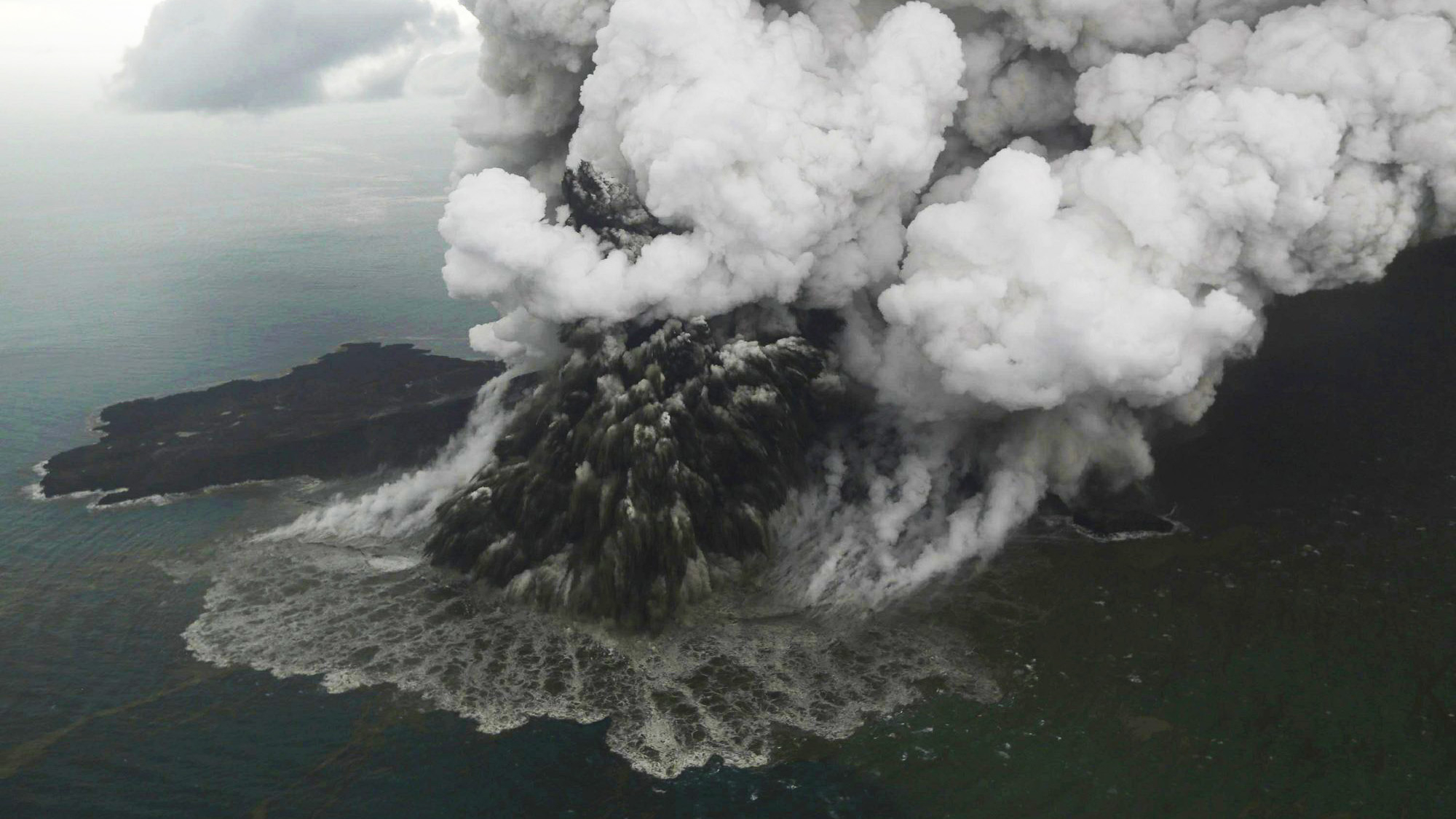
A tsunami generated by volcanic eruptions is rare. The collapse of Indonesia's Anak Krakatau volcano triggered a deadly tsunami across the islands of Sumatra and Java earlier this month. According to newly released radar images, the volcano's southwestern flank has disappeared.
The satellite photos were deemed invalid because of cloud cover, so a Japan Aerospace Exploration Agency satellite converted the radar data into images.
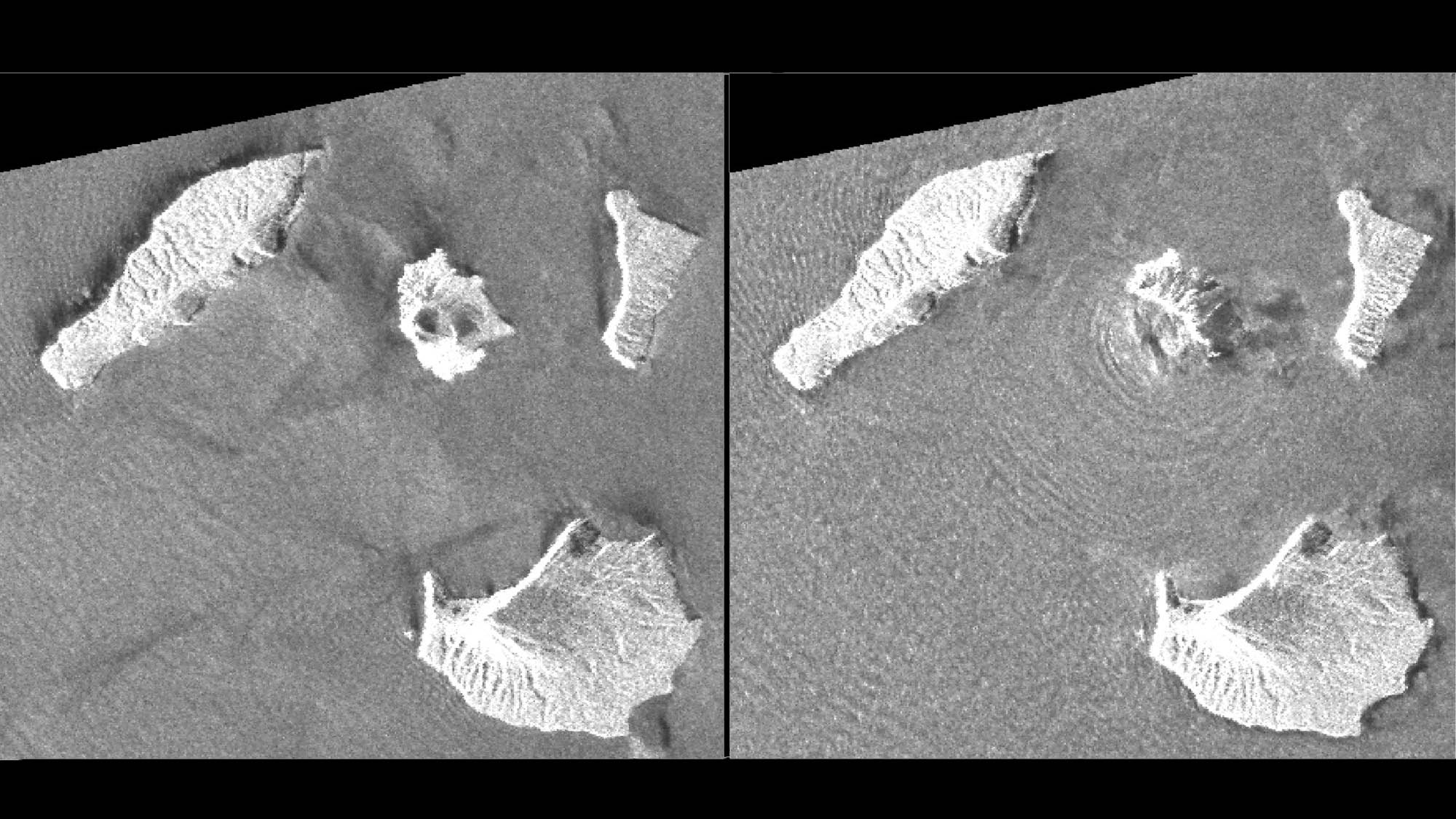
Images taken on Aug. 20, 2018, left, and Dec. 24, 2018, right, show a deformation on the volcano's southwest side. /AP Photo
Images taken on Aug. 20, 2018, left, and Dec. 24, 2018, right, show a deformation on the volcano's southwest side. /AP Photo
It is believed that undersea landslides were the main cause of the tsunami. This theory is supported by Dave Petley, head of research and innovation at Sheffield University who analyzed similar images from a European Space Agency satellite.
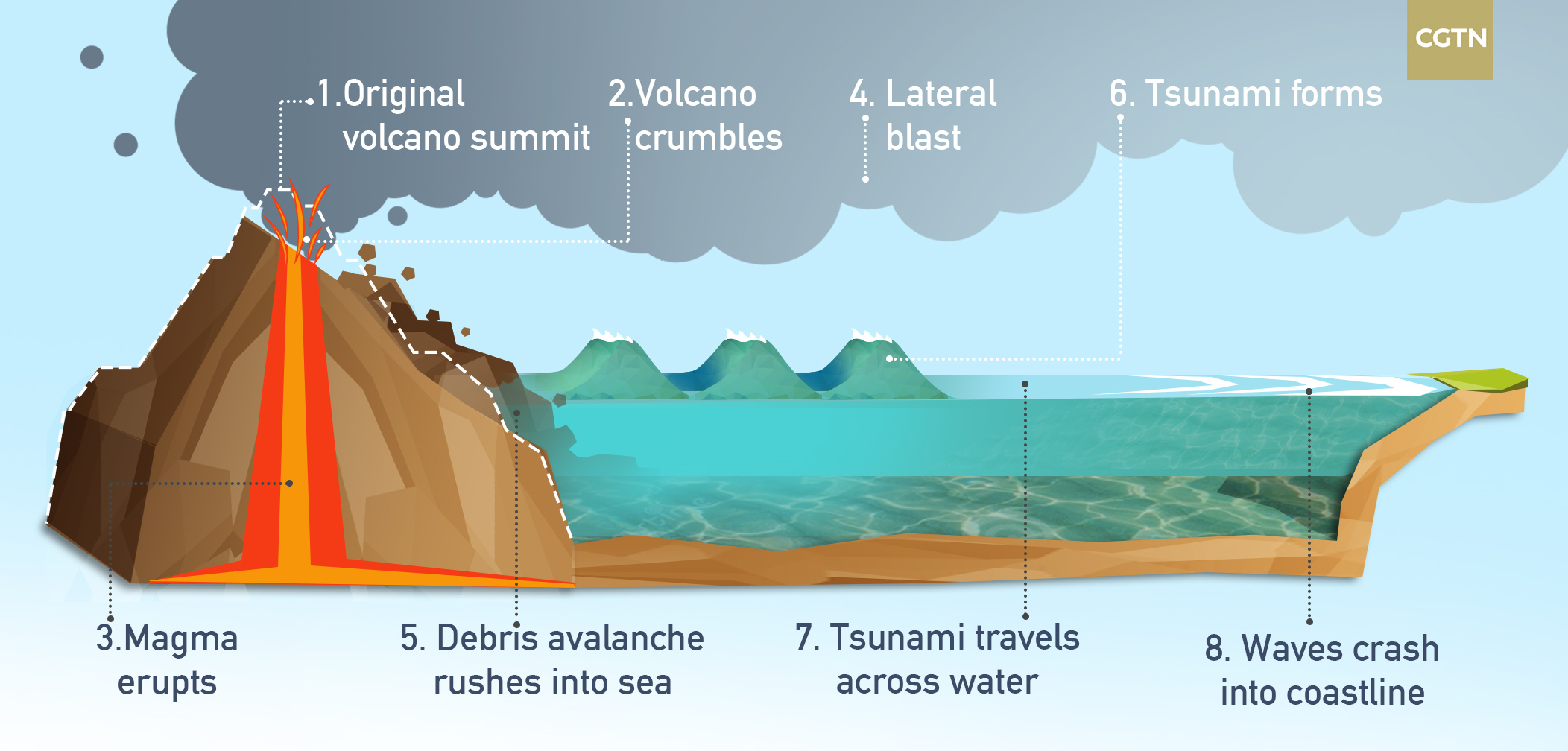
Diagram shows how a volcanic eruption can generate a tsunami. /CGTN Photo
Diagram shows how a volcanic eruption can generate a tsunami. /CGTN Photo
Tsunami is a series of sea wave, also known as seismic sea waves. It's one of the most destructive natural forces with extreme power. A volcanic tsunami can be caused by violent submarine explosions, caldera collapses, tectonic movement from volcanic activity, flank failure or pyroclastic flow discharge into the sea.
A volcanic tsunami is formed by a sudden displacement of water, similar to how earthquakes can trigger a tsunami. When a wave is formed, it moves in a vertical direction at high speed. In deeper waters, the wave can reach speeds as fast as 650 mph (1046.07k/ph), and 200mph (321.87k/ph) in shallow water. As the tsunami contains high speed and energy, it can travel across the water and hit the coastline with little warning.
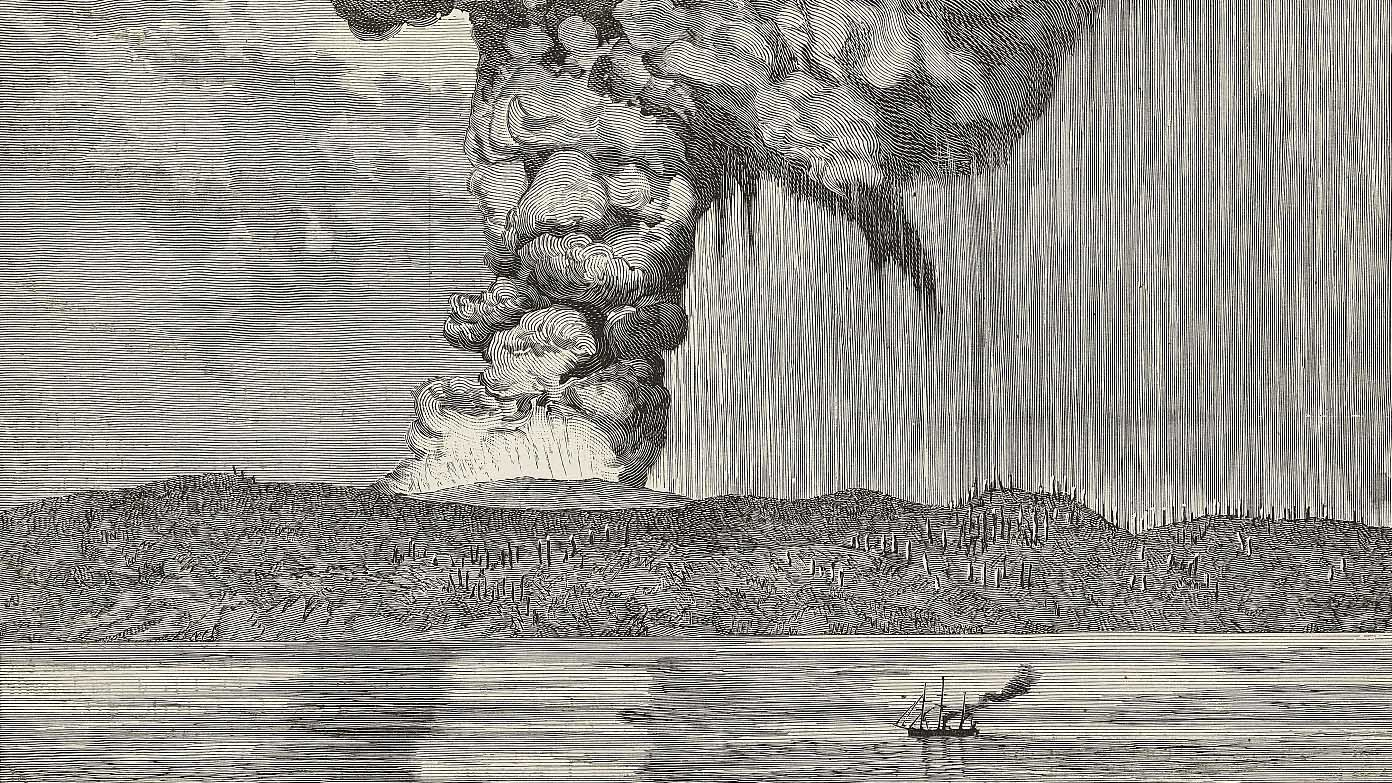
Eruption of Krakatoa volcano, on August 11, 1883, Indonesia. /VCG Photo
Eruption of Krakatoa volcano, on August 11, 1883, Indonesia. /VCG Photo
On August 27, 1883, the eruption and collapse of the Krakatoa volcano caused the largest and the most destructive tsunami in history. The wave was generated within a minute after the explosion, and great power was formed in about 15 minutes. It destroyed the islands of Java and Sumatra and killed 36,417 people.
The volcano Anak Krakatau, which caused the tsunami that killed at least 430 people on the night of December 22, is the offspring of Krakatau volcano. Anak Krakatau means child of Krakatau. According to Indonesia's volcanology agency, the first time it rose above the sea level was in 1929. And since then, it has been increasing its land size massively.
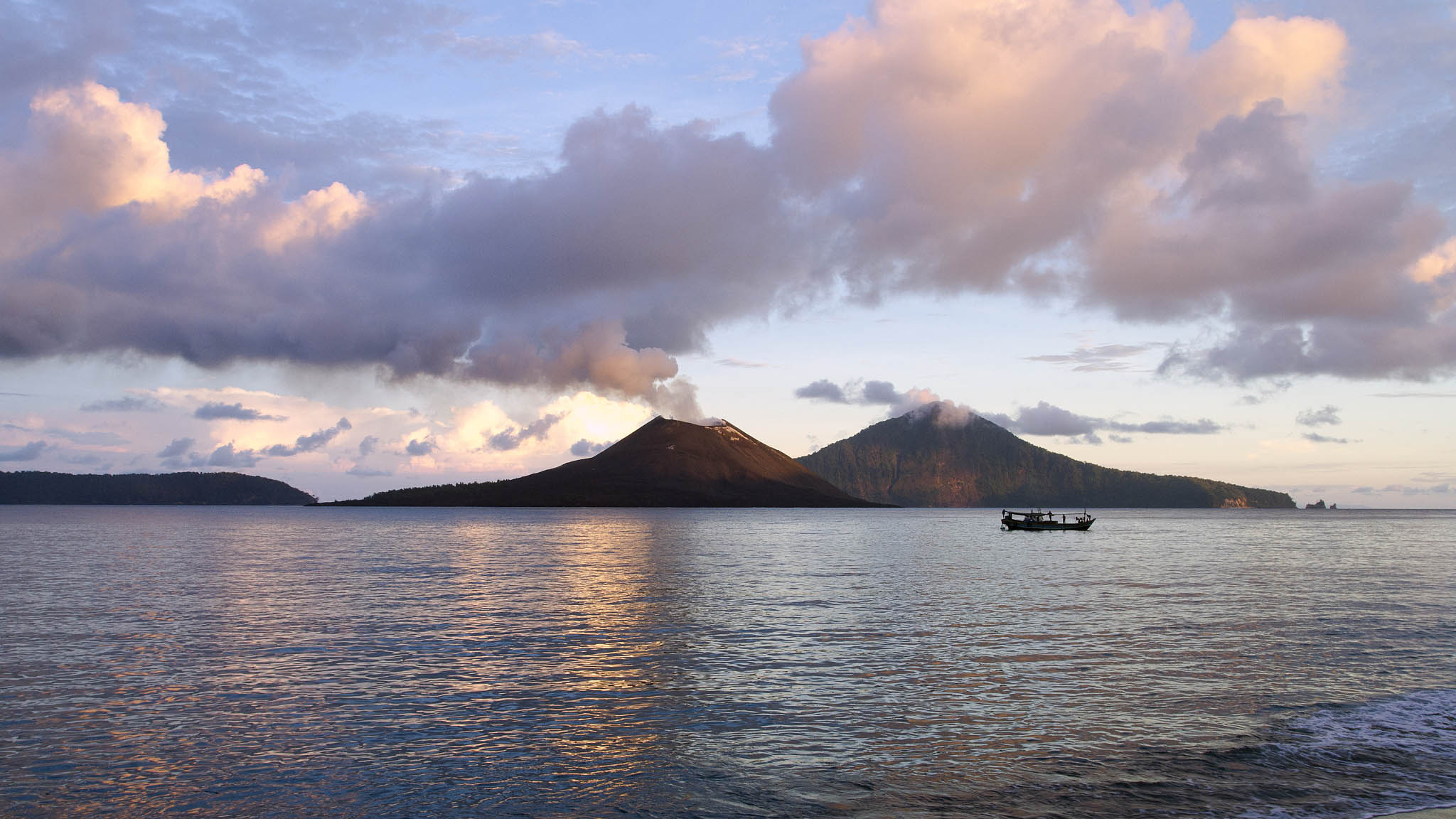
The Anak Krakatau volcano seen from the beach. /VCG Photo
The Anak Krakatau volcano seen from the beach. /VCG Photo
Are tsunamis predictable? Scientists cannot directly predict when and where a tsunami will happen, but tsunami warning centers can estimate the likelihood of tsunamis through earthquakes.
As the existing equipment couldn't provide warning of the volcanic tsunami, Indonesia is going to build a new warning system to detect the tsunami by monitoring the size of waves. But the distance from Anak Krakatau to offshore islands may not allow enough warning time.

SITEMAP
Copyright © 2018 CGTN. Beijing ICP prepared NO.16065310-3
Copyright © 2018 CGTN. Beijing ICP prepared NO.16065310-3